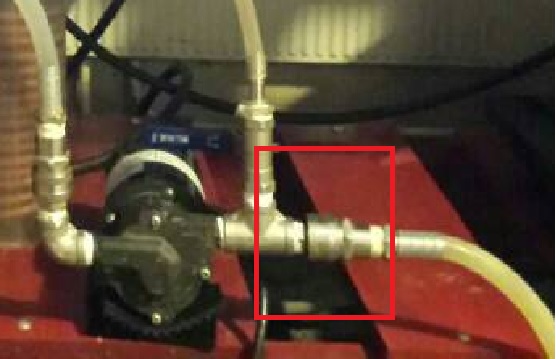Smellyglove
Well-Known Member
- Joined
- May 17, 2013
- Messages
- 2,807
- Reaction score
- 807
Sorry I keep beating this horse, but it isn't dead until the sound of air is gone..
I've tried restricting the output, but that didn't seem to help much. Although it was a logical thing to do.
I just discovered something new.
I tilted the mt just to drain it, it's a 10g boilermaker. And as I tilted it huge amounts of air escaped from under the FB. I have NO idea what that amount of air was doing down there. This is a mystery to me. So I'm guessing I'm sucking that air into my pump. Now the question is if that air builds up over time, and if it does, why does it happen.
Idk if this has anything to say, but when I open up the priming valve, which is located on the pump exit, it immediately sucks tonnes of air.
Could it be that the FB is to tight for how I'm running the system? There's way more restriction after the pump (herms and sparge arm) than before the pump.
Thanks for your patience guys. Everything helps.
Btw, I'm 100% sure its not a leak in threads, I've swapped everything, but I haven't run the system without the FB.
Edit: even clogged the sight glass, no difference. The water which i start out with is very cold. Its winter here in Norway.
I've tried restricting the output, but that didn't seem to help much. Although it was a logical thing to do.
I just discovered something new.
I tilted the mt just to drain it, it's a 10g boilermaker. And as I tilted it huge amounts of air escaped from under the FB. I have NO idea what that amount of air was doing down there. This is a mystery to me. So I'm guessing I'm sucking that air into my pump. Now the question is if that air builds up over time, and if it does, why does it happen.
Idk if this has anything to say, but when I open up the priming valve, which is located on the pump exit, it immediately sucks tonnes of air.
Could it be that the FB is to tight for how I'm running the system? There's way more restriction after the pump (herms and sparge arm) than before the pump.
Thanks for your patience guys. Everything helps.
Btw, I'm 100% sure its not a leak in threads, I've swapped everything, but I haven't run the system without the FB.
Edit: even clogged the sight glass, no difference. The water which i start out with is very cold. Its winter here in Norway.



















![Craft A Brew - Safale S-04 Dry Yeast - Fermentis - English Ale Dry Yeast - For English and American Ales and Hard Apple Ciders - Ingredients for Home Brewing - Beer Making Supplies - [1 Pack]](https://m.media-amazon.com/images/I/41fVGNh6JfL._SL500_.jpg)









































